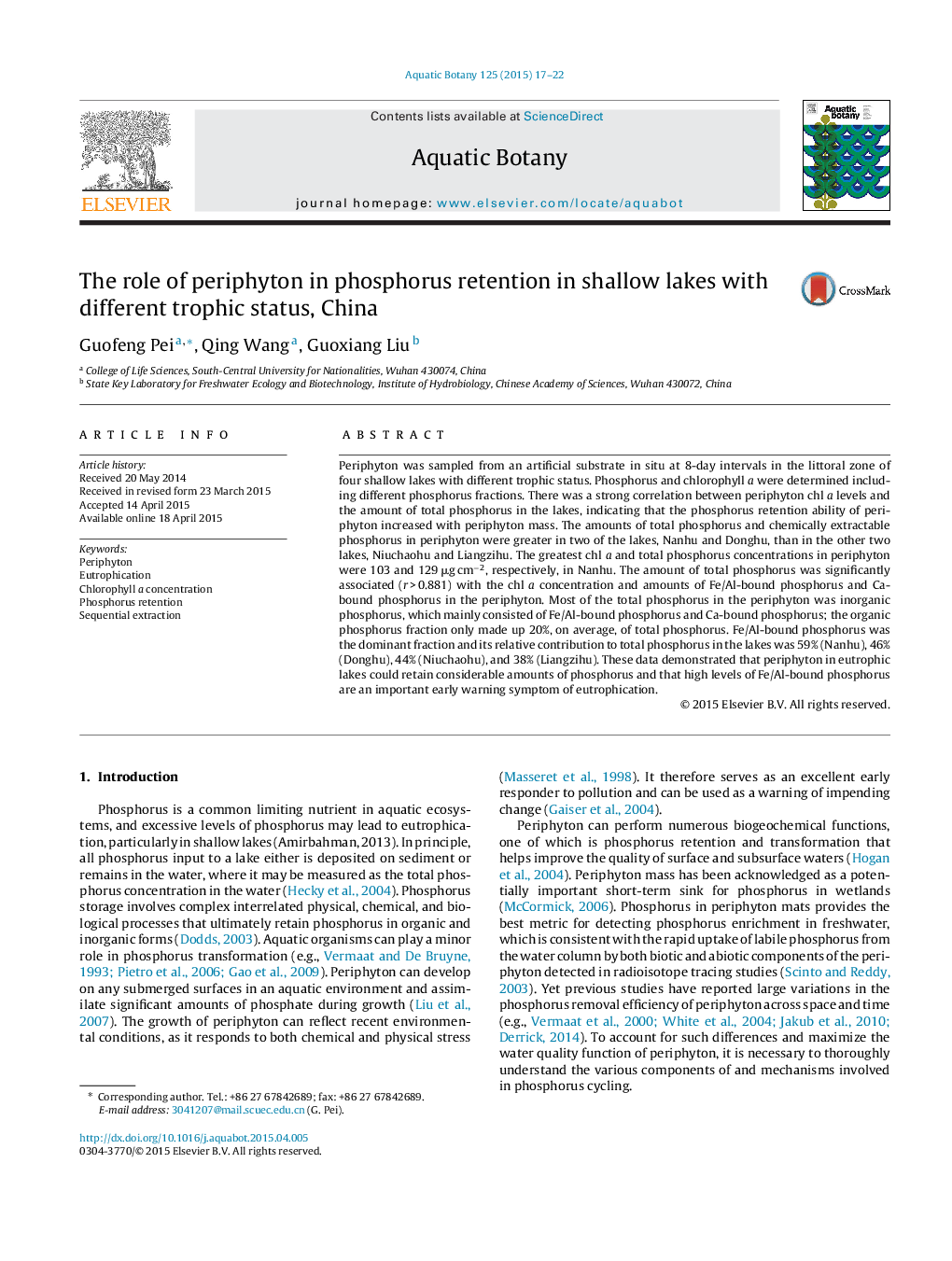| Article ID | Journal | Published Year | Pages | File Type |
|---|---|---|---|---|
| 4527626 | Aquatic Botany | 2015 | 6 Pages |
•Periphyton can rapidly store available phosphorus from the water column.•Periphyton TP was strongly and positively correlated with chl a concentration.•The Fe–P and Ca–P fractions constituted about three-quarter of the periphyton TP.•Periphyton Fe–P may be considered an important early warning of eutrophication.
Periphyton was sampled from an artificial substrate in situ at 8-day intervals in the littoral zone of four shallow lakes with different trophic status. Phosphorus and chlorophyll a were determined including different phosphorus fractions. There was a strong correlation between periphyton chl a levels and the amount of total phosphorus in the lakes, indicating that the phosphorus retention ability of periphyton increased with periphyton mass. The amounts of total phosphorus and chemically extractable phosphorus in periphyton were greater in two of the lakes, Nanhu and Donghu, than in the other two lakes, Niuchaohu and Liangzihu. The greatest chl a and total phosphorus concentrations in periphyton were 103 and 129 μg cm−2, respectively, in Nanhu. The amount of total phosphorus was significantly associated (r > 0.881) with the chl a concentration and amounts of Fe/Al-bound phosphorus and Ca-bound phosphorus in the periphyton. Most of the total phosphorus in the periphyton was inorganic phosphorus, which mainly consisted of Fe/Al-bound phosphorus and Ca-bound phosphorus; the organic phosphorus fraction only made up 20%, on average, of total phosphorus. Fe/Al-bound phosphorus was the dominant fraction and its relative contribution to total phosphorus in the lakes was 59% (Nanhu), 46% (Donghu), 44% (Niuchaohu), and 38% (Liangzihu). These data demonstrated that periphyton in eutrophic lakes could retain considerable amounts of phosphorus and that high levels of Fe/Al-bound phosphorus are an important early warning symptom of eutrophication.
